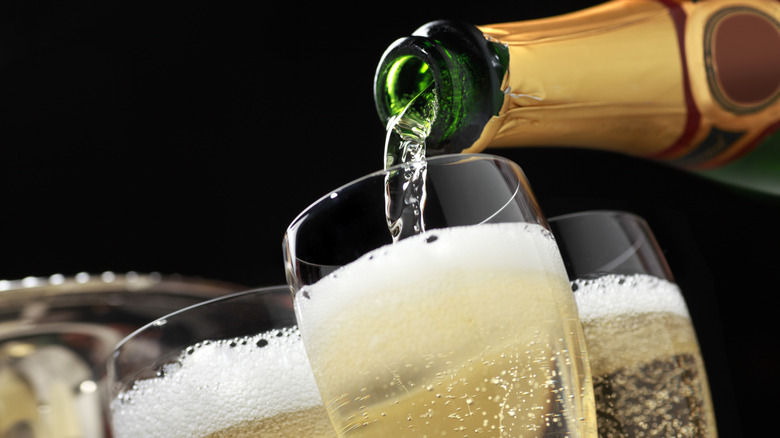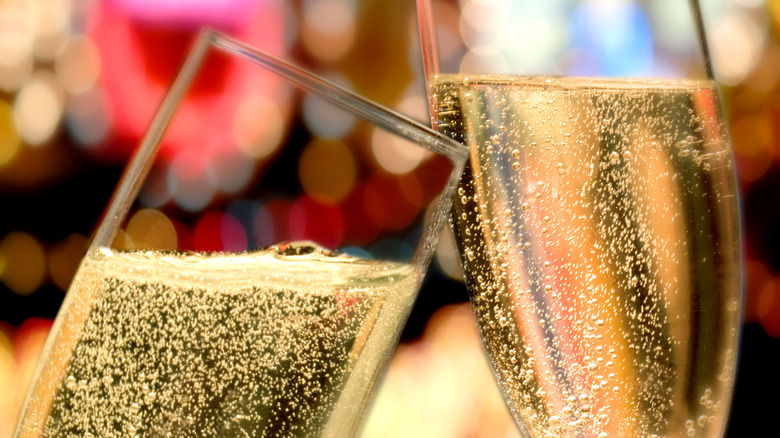Brut Vs Extra Dry Champagne: What's The Difference?
Everyone loves a glass of bubbly to celebrate something exciting like the New Year, an anniversary, or a birthday. But, if you're spending your cash on true Champagne, you'll probably want to decode a few things on the label before popping that cork. One signifier you'll notice on some Champagne bottles is the term "Brut," while others might be labeled "extra dry." So, what exactly is the difference between Brut and extra dry Champagne?
First off, Champagne is labeled according to its sweetness levels. In the case of Brut (which means "raw" or "unrefined"), it's the least sweet Champagne type of them all and must include less than 12 grams of added sugar per liter. The reason you see so many bottles labeled with "Brut" is because it's the most common type of sparkling wine available.
The "extra dry" descriptor then is slightly confusing, because it technically describes a type of Champagne that's sweeter than Brut. However, the difference is not as large as you might think. While Brut has up to 12 grams of sugar per liter, extra dry Champagne hovers between 12-17 grams of added sugar per liter.
What is the sweetest type of Champagne?
On the opposite end of the spectrum, then, is Champagne "Doux." When you see this term, be prepared for quite a sweet drink, because Doux Champagnes contains an impressively sweet 50 grams of sugar per liter. This type of bubbly is nowhere near as popular as the Brut style, which is why you don't see this version on menus very often (if at all) or at your local liquor store.
No matter how you like your Champagne, though, there is an ideal temperature to open it at: 45 degrees Fahrenheit. This ensures that the bubbly is warm enough to bring out the flavors but not so warm that the cork explodes from the bottle — the cork can admittedly be a little scary depending on how frisky it's feeling that day. Once the bottle is open, get ready to toast with a good old-fashioned clink of your glass, or get going on your brunch mimosas.

